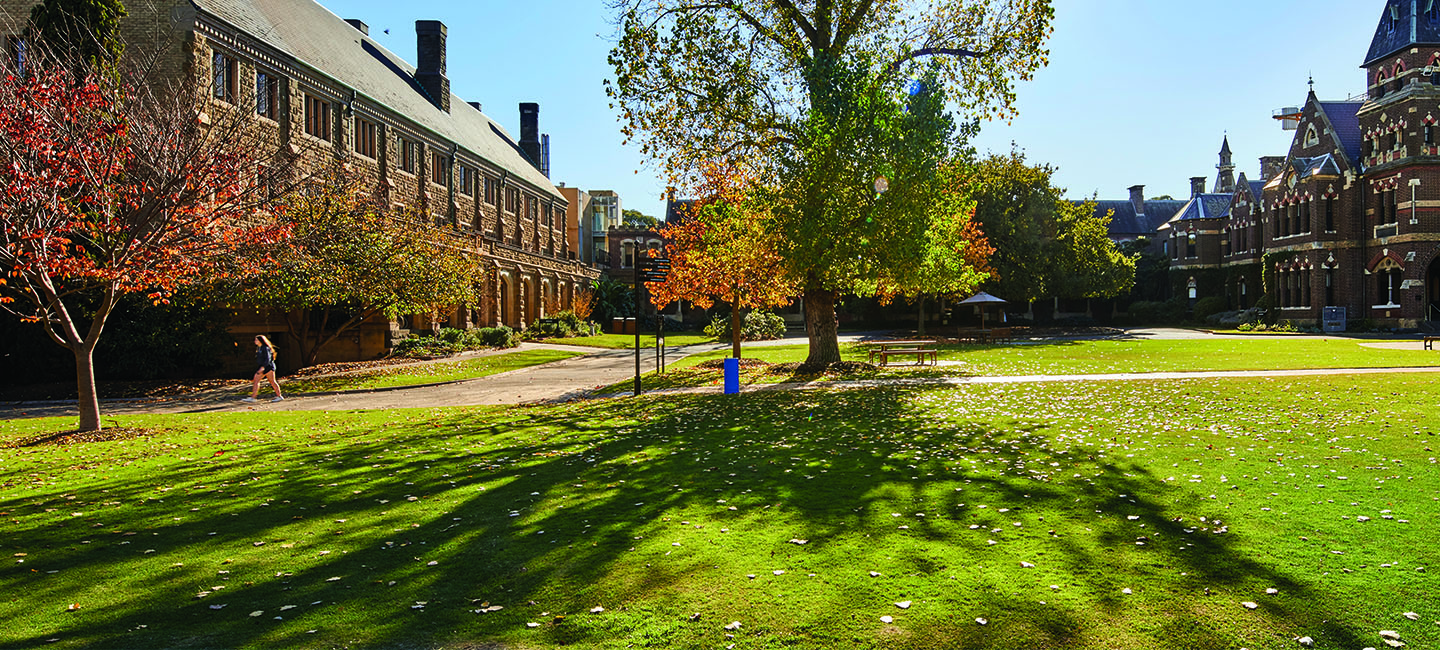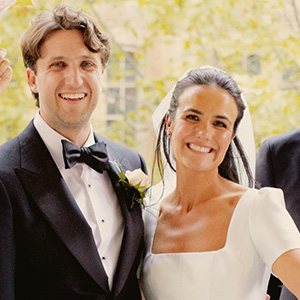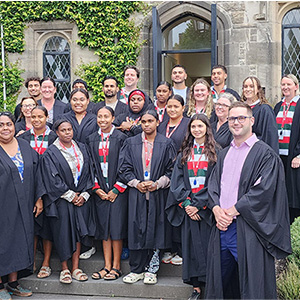

Celebrating 40 years of co-residency
Forty years ago, Trinity College – that ‘bastion of masculinity’ as The Age described it in 1973 – welcomed women to share its buildings and bathrooms in an official capacity. Nothing has been quite the same since.
Women weren’t new to the College in 1974. The first woman to become a member of any Australian university college was Lilian Alexander, who was enrolled by the first Warden, Dr Leeper, on 4 April 1883. Three years later the Trinity Women’s Hostel opened with four students in residence. That it opened at all was largely due to the munificence of Janet, Lady Clarke, who provided ongoing financial and practical backing for Leeper’s dream of an independent women’s hostel in the face of a less than enthusiastic College Council.
Janet Clarke Hall’s move to independent affiliation in 1961 meant that Trinity lost the leavening influence of its JCH ladies and became almost exclusively male, with women admitted only on a non-resident basis. There was no desire at this time to change the status quo. Trinity in the 1960s was typical of other such colleges in Australia and England: a conservatively macho environment with, what Professor Robin Sharwood described as, ‘absurdly restrictive rules on women visitors’. Gradually, though, the foment of challenge and change of accepted mores began to impact the College community. This change was greatly encouraged and supported by Professor Sharwood, whose resolution to transform Trinity into ‘a society where men and women lived and worked and socialised together with mutual delight and respect’ laid the foundation stones for the revolution that followed.
By the early 1970s, the first tentative steps were taken towards co-residency. Despite the formidable obstacles, not least the suitability of the College’s buildings to house both sexes, on 2 August 1972, the College Council unanimously agreed that ‘this Council sees no objection in principle to the introduction of women residents’. A little over twelve months later, Romayne Holmes became the first woman offered a residential place at Trinity College.
It’s incredibly tempting to think of the first women enrollees as pioneering groundbreakers, but to a woman they decry this description and view their experiences as just one of those things. At the recent reunion for the entry years of 1972 to 1974, I was lucky enough to meet six of the 1974 intake of women and was struck by their matter-of-fact attitude to life in this former ‘bastion of masculinity’.
While ten women signed the College register in 1974, their initial experiences were quite different. Because of the ongoing renovations to Bishops’ bathrooms, four of them were housed with the Burge family in the Warden’s Lodge. Some newcomers, such as Moonee Ponds resident Sarah Deasey, boarded at home for their first term, only moving in once the Bishops’ improvements were completed.
As the year progressed, so did the impact on Trinity life of the new order. The College fielded teams in as many women’s sporting events as numbers allowed, with Trinity women having a particularly strong impact on the Inter-collegiate Athletics competition, prompting Athletics’ Captain, Digby Crisp, to lament in his report for the Fleur-de-Lys, ‘Maybe if some of he apathetic sportsmen in the College took a lesson from the females, Trinity could end up winning the Athletics Cup’.
On the night of the recent reunion, it was fascinating to listen as the 1974 intake reminisced about their early experiences at the College. There were many laughs about sporting achievements and about their participation in that year’s College play. Amanda Bednall (now Maddy McMaster) the former doyenne of the Drama Club, spoke of the thrill that was felt when receiving a prized invitation to the gentlemen’s Behan Building wine and cheese parties. She also remembered parties in Jeopardy, which always seemed to end with the playing of Monty Python records.
While the prevailing view of the presence of women in College appears to have bee



